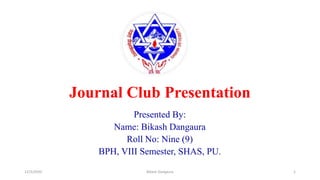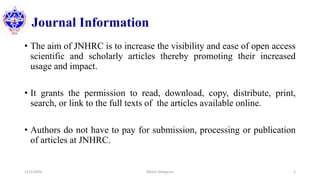The presentation by Bikash Dangaura reviews a study on factors affecting enrollment in the government health insurance program in Kailali district, Nepal. The study identifies key determinants such as education, economic status, and chronic illness and provides recommendations for improving health insurance uptake and accessibility. The findings contribute to the discourse on health policy and are relevant for future research.









![Authors
• Deepak Raj Paudel (Kathmandu University School of Education,
Lalitpur)
• Doctor of Education/Master of Statistics and Health Research
• 7 Publications, 619 Reads and 12 Citations
• Currently running Project: 1 [Utilization and Health Care
Expenditure: An experience from Health Insurance in Nepal (PhD
Research Project)]
• Skills and Expertise in Health, Health Disparities, Health Inequality,
Health Outcomes, Health Equity, Health Care Management, Health Care
Delivery, PH Education, Health Management and Health Planning
• Current Affiliation: Associate Professor at School of Business,
Pokhara University
• Source: https://www.researchgate.net/profile/Deepak_Paudel5
12/3/2020 Bikash Dangaura 10](https://image.slidesharecdn.com/9bikashdangaurajournalclubpresentationfinaledited-201210152706/85/9-bikash-dangaura_journal_club_presentation_final_edited-10-320.jpg)

























